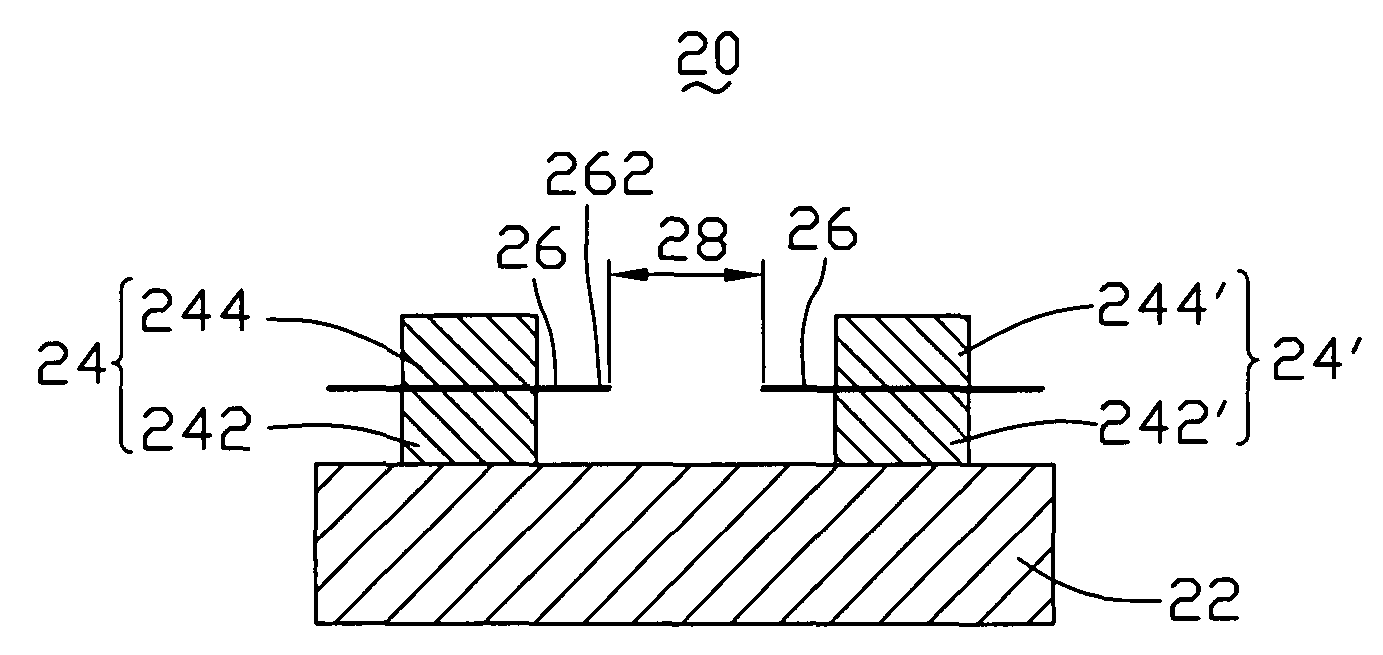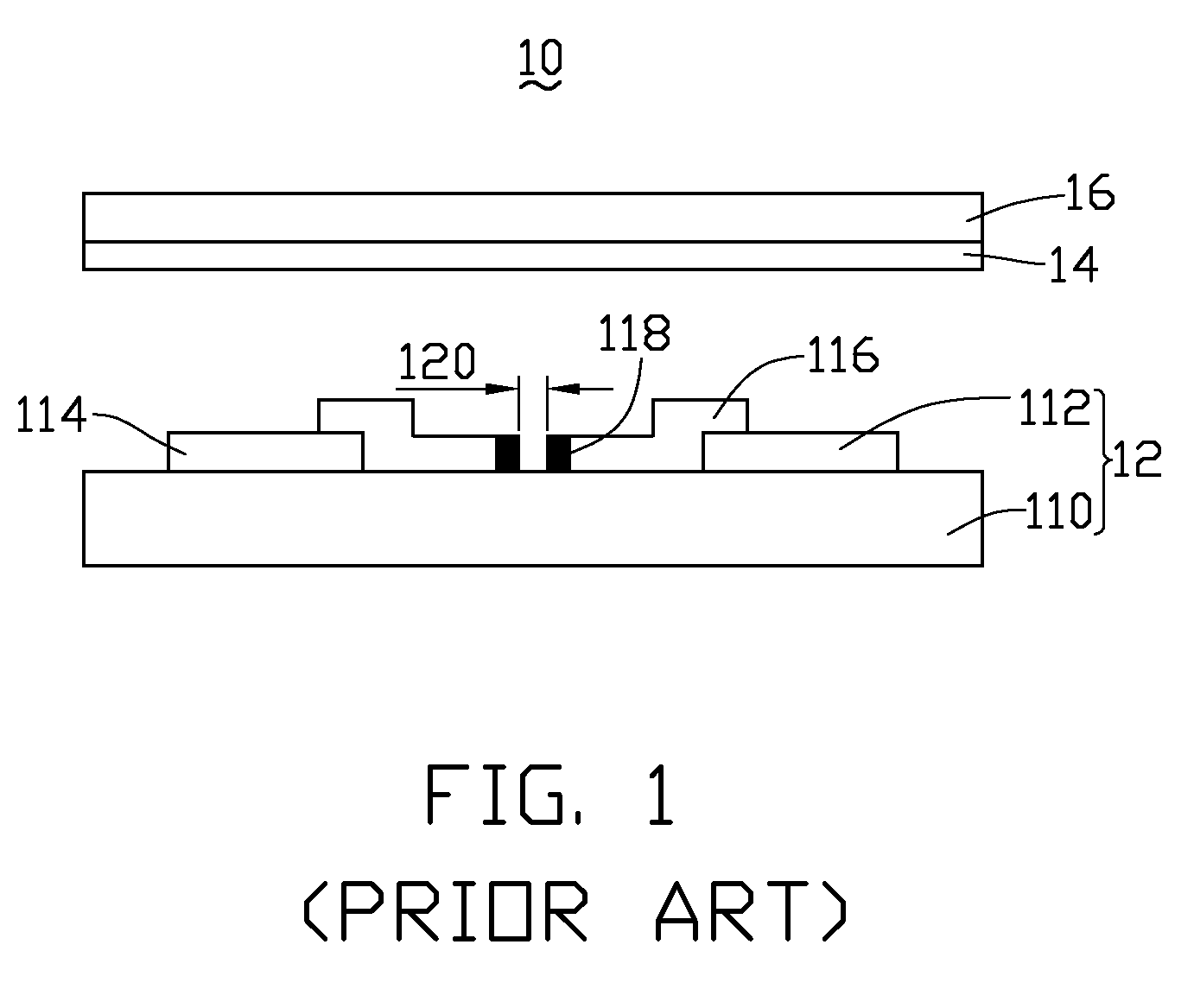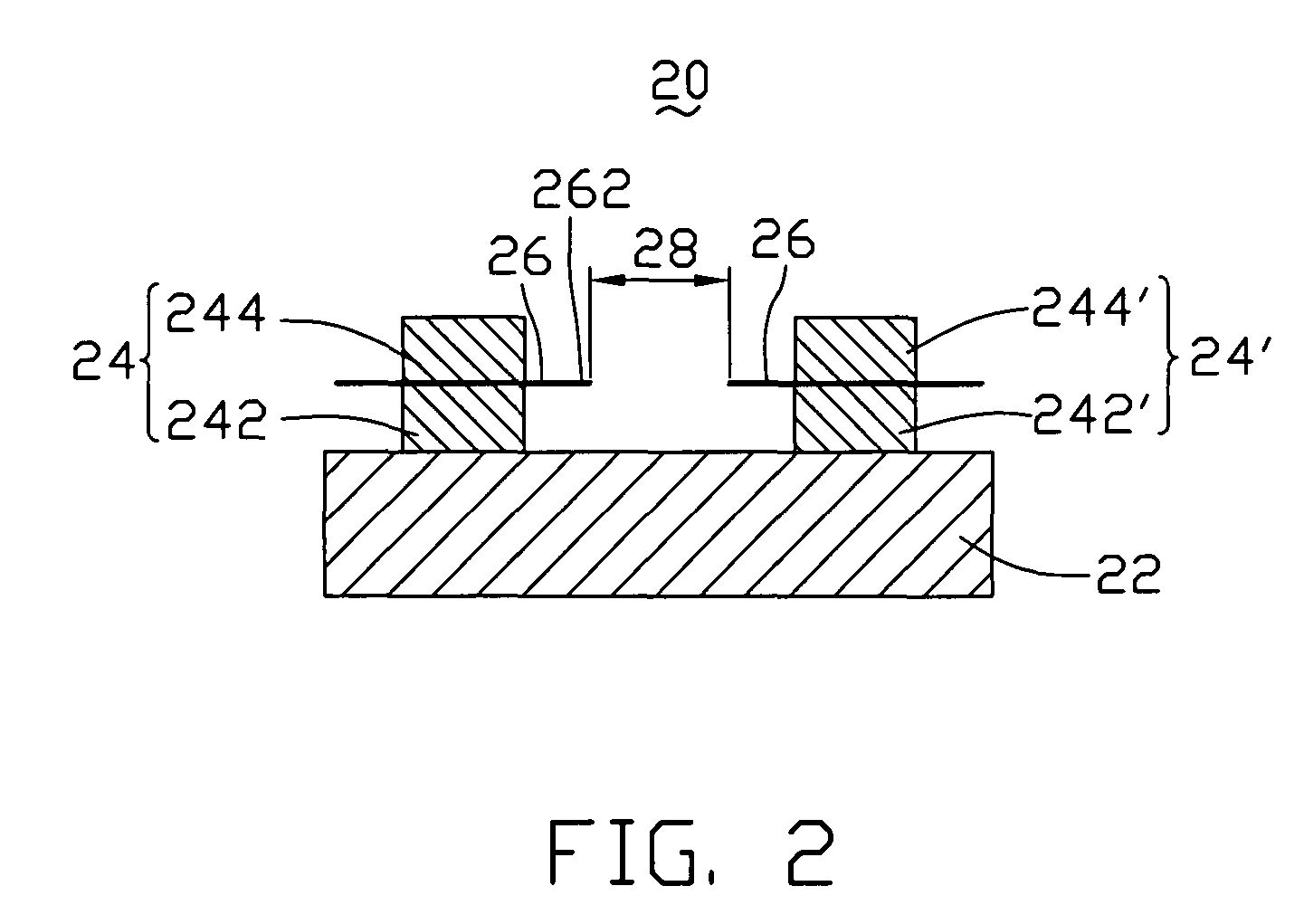Method for fabricating electron emitter
a surface-conducting electron and emitter technology, which is applied in the manufacture of electric discharge tubes/lamps, electrode systems, discharge tubes luminescnet screens, etc., can solve the problems of low brightness and narrow viewing angle when compared with the other fpds, and high energy consumption
- Summary
- Abstract
- Description
- Claims
- Application Information
AI Technical Summary
Benefits of technology
Problems solved by technology
Method used
Image
Examples
first embodiment
[0027]Referring to FIG. 2, a surface-conduction electron emitter 20 in the first embodiment includes a substrate 22, a first electrode 24, a second electrode 24′, and two line-shaped carbon nanotube elements 26. The first electrode 24 and the second electrode 24′ are parallel to each other and disposed on the substrate 22.
[0028]The first electrode 24 and the second electrode 24′ respectively include lower layers 242 and 242′, and upper layers 244 and 244′. The lower layers 242 and 242′ are disposed on a surface of the substrate 22. The upper layers 244 and 244′ are disposed on the lower layers 242 and 242′. Two carbon nanotube elements 26 are respectively sandwiched by the upper layers 244 and 244′ and the lower layers 242 and 242′, and thereby, fixed on the first electrode 24 and the second electrode 24′. Each carbon nanotube element 26 includes at least one emitting end 262 protruding from the first electrode 24 and / or the second electrode 24′. The emitting ends 262 of the two car...
second embodiment
[0038]The thickness of the spacer 48 is less than or equal to the thickness of the lower layers 442 and 442′. The spacer 48 can, beneficially, be made of a material selected from a group consisting of silicon dioxide, alumina, metal oxides, and ceramic. In the second embodiment, the spacer 48 is a layer of silicon dioxide. The thickness of the spacer 48 is in the approximate range from 40 to 70 nanometers. The spacer 48 can prevent a bend or a break of the carbon nanotube elements 40 protruding from the first electrodes 44 and the second electrodes 44′ that could be caused by the effects of gravity or the electrical field.
[0039]Referring to FIG. 7, the surface-conduction electron emitter 50 in the third embodiment is similar to the surface-conduction electron emitter 20 in the first embodiment, and includes a substrate 52, a first electrode 54, a second electrode 54′, and two line-shaped carbon nanotube elements 56. The first electrode 54 and the second electrode 54′ are parallel to...
PUM
| Property | Measurement | Unit |
|---|---|---|
| thickness | aaaaa | aaaaa |
| thickness | aaaaa | aaaaa |
| thickness | aaaaa | aaaaa |
Abstract
Description
Claims
Application Information
 Login to View More
Login to View More - R&D
- Intellectual Property
- Life Sciences
- Materials
- Tech Scout
- Unparalleled Data Quality
- Higher Quality Content
- 60% Fewer Hallucinations
Browse by: Latest US Patents, China's latest patents, Technical Efficacy Thesaurus, Application Domain, Technology Topic, Popular Technical Reports.
© 2025 PatSnap. All rights reserved.Legal|Privacy policy|Modern Slavery Act Transparency Statement|Sitemap|About US| Contact US: help@patsnap.com



